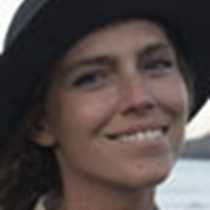Guests onboard National Geographic Endeavour II spent the day exploring the island of Santa Cruz. We spent the morning in the port town of Puerto Ayora and the afternoon in the highlands, two very distinct zones of the island. We kicked off the day at the Charles Darwin Research Station, where we discussed some of the important investigations being done to help better understand and protect the islands. The Charles Darwin Research Station was established around the same time as the Galapagos National Park. This research station is in a special position to directly inform the Galapagos National Park on all matters of natural ecosystems within the archipelago – as well as human communities – and aid in bringing forth management policies. The giant tortoise captive breeding center is a highlight at the research station. We visited the corrals where juvenile giant tortoises live out the first years of their lives before being repatriated to their home islands. While most of the breeding and incubation of these species are done in the wild, this program has been incredibly instrumental in repopulating some of the most decimated of giant tortoise species. After our visit to the Charles Darwin Research Station, we journeyed up into the highlands of Santa Cruz island.
In the highlands, we visited a small family-run farm called El Trapiche. Guests learned about how this local family produces small batches of organic sugar, molasses, raw coco, and sugar cane rum. After tasting some of the products, many guests took the opportunity to purchase items to bring back home. After our visit to El Trapiche, we made our way to another small farm for lunch.
The afternoon was dedicated to observing the Santa Cruz giant tortoise in the wild. At El Chato II, guests had the special opportunity to see many of these individuals in their natural habitat and get some spectacular family photos. El Chato II is a private farm where the Santa Cruz giant tortoises just happen to frequent. We discussed the giant tortoise’s role as the megaherbivore in the archipelago; these creatures are the major landscapers of the terrestrial ecosystem, shaping the vegetative landscape as they mosey along the terrain munching on plants and dropping germinated seeds. The giant tortoise has a very interesting evolutionary history of adaptive radiation, where a single colonization a couple million years ago gave rise to more than a dozen distinct species. A hallmark species of the Galapagos, guests were thrilled to spend time observing and learning more about the giant tortoises.
In the evening, guests enjoyed entertainment onboard the ship. Local artisans demonstrated their crafts of glass etching, chocolate production, painting and sculpture. Local musicians and dancers from the group EcoArte performed live.









